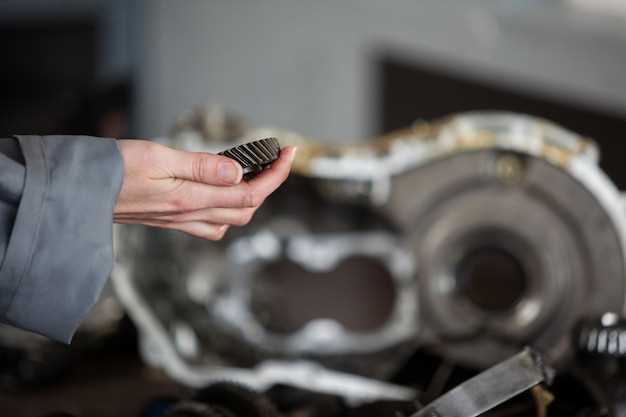
Transmission issues can lead to significant complications for vehicle owners, often resulting in costly repairs and decreased performance. Understanding how to prevent these issues is crucial for ensuring the longevity and reliability of your vehicle. Regular diagnostics can help identify potential problems before they escalate, allowing you to address issues early and effectively.
One common symptom that drivers may experience is the sensation of the transmission slipping. This occurs when the engine revs higher without a corresponding increase in speed, indicating a possible failure in the transmission system. Early detection through routine maintenance and diagnostics can prevent minor issues from developing into major failures that require extensive repairs.
In this article, we will explore the most prevalent transmission problems, the importance of regular maintenance, and best practices to keep your vehicle running smoothly. By being proactive, you can significantly reduce the risk of facing severe transmission issues down the road.
Identifying Early Signs of Transmission Issues

Recognizing the early signs of transmission problems is crucial for maintaining your vehicle’s performance and prolonging its lifespan. A well-functioning transmission is integral to the smooth operation of your car, so being aware of potential issues can save you from costly repairs.
Delayed or Slipping Gears: One of the first symptoms you may notice is a delay in gear engagement or your vehicle slipping out of gear unexpectedly. If you find that your car hesitates to shift when you press the accelerator, or if the gears feel like they are not engaging smoothly, it’s time to investigate further. Slipping can indicate low transmission fluid levels or internal wear.
Unusual Noises: Listen for any strange sounds when the vehicle is in gear. Grinding, clunking, or whining noises can be indicative of transmission wear. These sounds often arise from damaged or misaligned components, and they signal that you should seek professional diagnostics soon.
Fluid Leaks: Regularly check for transmission fluid leaks under your vehicle. Transmission fluid is typically red or brown, and a visible leak can lead to low fluid levels, exacerbating any existing issues. Addressing a leak promptly can prevent more extensive damage to the transmission system.
Warning Lights: Many modern vehicles are equipped with onboard diagnostics that alert you to potential problems. Pay attention to the check engine light, as it can indicate transmission-related issues. Connecting your vehicle to a diagnostic tool can reveal error codes, helping pinpoint the exact problem.
Unresponsive Transmission: If you experience a lack of response when shifting from park to drive or reverse, this can be an indication of a transmission issue. A properly functioning transmission should allow for smooth shifting without significant effort. Any excessive force required to shift could be a sign of an underlying problem.
Monitoring these early warning signs is essential for maintaining the health of your vehicle’s transmission. Regular maintenance and timely diagnostics can help ensure that your transmission operates efficiently, saving you both time and money in the long run.
Steps to Diagnose Gear Slipping in Automatics
Diagnosing gear slipping in automatic transmissions requires a systematic approach to identify the underlying issues. Start by collecting information about the symptoms observed during driving, such as unexpected acceleration, RPM fluctuations, or a delay in engagement when shifting gears.
Next, check the transmission fluid level and condition. Low fluid levels or dirty, burnt fluid can lead to insufficient lubrication and overheating, causing the gears to slip. If necessary, top off or replace the fluid and monitor for changes in performance.
Inspect for visible leaks beneath the vehicle. Fluid leaks can severely impact transmission performance, leading to gear slipping. Pay attention to seals and gaskets around the transmission, as these are common sources of leaks.
Listen for unusual sounds when the vehicle is in gear. Grinding, whining, or clunking noises can indicate internal damage or worn components. These sounds often accompany gear slipping and may require further investigation.
Monitor the operation of the throttle and ensure it is functioning correctly. Issues with the throttle position sensor may lead to improper communication between the engine and transmission, resulting in gear slipping. Test the sensor by using a diagnostic tool for error codes.
Conduct a road test to observe when the slipping occurs. Take note of specific conditions such as acceleration, deceleration, and terrain. Understanding these patterns can help pinpoint if the issue is related to electronic controls or mechanical components.
If basic checks do not reveal the problem, consider using an OBD-II scanner to retrieve diagnostic trouble codes. These codes provide insights into any electronic issues affecting the transmission and assist in narrowing down potential causes of gear slipping.
Lastly, if the problem persists, consult a professional mechanic for a thorough inspection. They can examine the internal components of the automatic transmission and perform repairs or adjustments as necessary to resolve the gear slipping issue.
Preventative Maintenance Tips for Smooth Shifting

To ensure smooth shifting and to prevent issues such as slipping during gear changes, regular preventative maintenance is essential. Here are several tips that can help maintain your vehicle’s transmission in optimal condition.
1. Regular Fluid Checks: Transmission fluid is crucial for lubrication and cooling. Check the fluid level frequently and top it up as needed. Pay attention to the color and smell of the fluid; dark or burnt fluid indicates it needs to be replaced.
2. Fluid Changes: Change the transmission fluid according to your vehicle’s maintenance schedule. Fresh fluid helps remove contaminants that can affect shifting performance. This task can prevent slipping and ensure proper hydraulic pressure within the transmission.
3. Filter Replacement: Some vehicles have a transmission filter that should be replaced periodically. Clogged filters can impede fluid flow, leading to poor performance and shifting issues. Make sure to replace it as recommended in your owner’s manual.
4. Diagnostics Checks: Regular diagnostics can help identify potential issues before they escalate. If you notice any signs of slipping or hesitation when shifting, run a diagnostic test to pinpoint problems early and mitigate severe repairs later on.
5. Driving Habits: Smooth shifting also relies on your driving style. Avoid aggressive acceleration and abrupt gear changes. Gradually increasing speed allows your transmission to shift more smoothly and reduces wear on components.
6. Check for Leaks: Regularly inspect under your vehicle for any signs of transmission fluid leaks. A drop in fluid levels can lead to slipping and other serious transmission problems. Addressing leaks promptly can prevent major issues.
7. Professional Inspections: Schedule professional check-ups with a qualified mechanic. They can ensure that all components of the transmission are functioning correctly and can provide insights into any necessary maintenance and repairs.
By following these tips, you can help ensure your vehicle’s transmission shifts smoothly, preventing slipping and extending its lifespan. Regular maintenance not only enhances performance but also saves you from costly repairs down the line.



